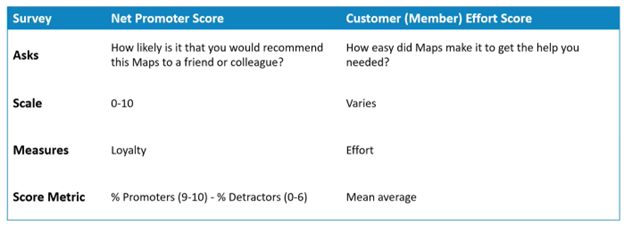Last month, Trellance hosted three webinars that highlighted three credit unions that are using data to drive change and innovation in their credit unions. We started the series with Maps Credit Union, who demonstrated how they were able to use a member survey to uncover areas for improvement in their branches. Let’s look at how to create a survey for your credit union and what you could do with the results.
Be Aware of Selection Bias
When creating a member feedback survey for your credit union, the first thing you’ll need to consider is what you’re trying to achieve. Do you want to compare your credit union to other financial institutions? Do you want to identify areas for improvement? Selection bias is an important thing to consider when creating your survey.
We have a tendency to manipulate data into saying what we want it to say, and that process can start before you even have data to review. Consider who you intend to send your survey to – and who you’re not. Are you leaving out any populations, such as members with a used car loan or members under 18, that you think will bring your survey scores down? Does your credit union want to increase satisfaction with those populations? If your credit union is looking only to see how they compare against competitors or to improve satisfaction among a core membership population, it may be okay to leave out certain populations. In general, though, leaving out populations will render an incomplete picture of member satisfaction, which may damage your credit union in the long run; it’s hard to make decisions with incomplete information.
If your credit union’s goal is to compare scores with a competing financial institution, take those results with a grain of salt – just as we’ve discussed leaving out populations here affecting your credit union’s results, you can never be sure what populations your competitors neglected to survey. Comparative survey results can make for good marketing material, but your credit union’s energy may be better spent reviewing their own membership.
Details to Consider When Creating Your Credit Union’s Survey
More things than you might think can affect the results of your credit union’s member satisfaction survey. Simple things such as format or using an employee’s name can skew the data, leaving your credit union with faulty information.
Some things you’re probably already aware of, such as the more questions your survey asks, the fewer responses you’ll get; very few people are willing to answer more than three to five questions. Keeping your surveys short and to the point will yield more data. But did you know including an employee name could yield more positive survey responses? When members see a question to the affect of “How satisfied were you with Jane’s service today?” their empathy tends to direct them to give the highest score possible, no matter what their experience was. This is great news if your credit union is only looking for a high score, but if you’re looking for real, usable feedback, you’d be better off avoiding this sort of question.
Avoid offering incentives to employees for getting members to fill out surveys as well. No matter how well meaning, this could lead the employee to provide some sort of coaching, telling the member how they’d like them to respond. If your credit union is looking to identify and correct issues, you want the most honest feedback possible, even if it hurts.
Creating a Member Satisfaction Survey at Your Credit Union
Maps recommends creating two different surveys, one to measure loyalty and one to measure effort expended by the member.

The loyalty survey, or Net Promoter Score, Maps recommends sending out daily to a random selection of 100 members. This cadence will allow your credit union to identify changing trends as your credit union makes changes and quickly become aware of issues as they arise. The survey consists of two questions:
- How likely is it that you would recommend this Maps to a friend or colleague?
- Please explain why you gave that score.
The scores can easily be converted to an overall percentage using the process defined in the graphic above, while the comments allow your credit union to identify what you’re doing well and what needs improvement.
The member effort score should be sent to members immediately following a visit to a branch, while the interaction is still fresh in the member’s mind. This survey also consists of two questions:
- How easy did Maps make it to get the help you needed?
- Please explain why you gave that score.
Ensuring that survey data is quickly reported on will allow your credit union to react to the data in a timely manner. Making sure you have the time and staff to respond to issues is an important thing to consider before launching one of these surveys.
There is always room for improvement – regularly conducting a membership survey can help your credit union quickly identify those areas and start implementing changes. Maps Credit union is a great example of this; by implementing these surveys, they were able to increase member satisfaction. For information on how to analyze the data provided by the surveys, watch Maps’ full webinar here.
Aaron Grossman is Vice President of Sales at Trellance.










